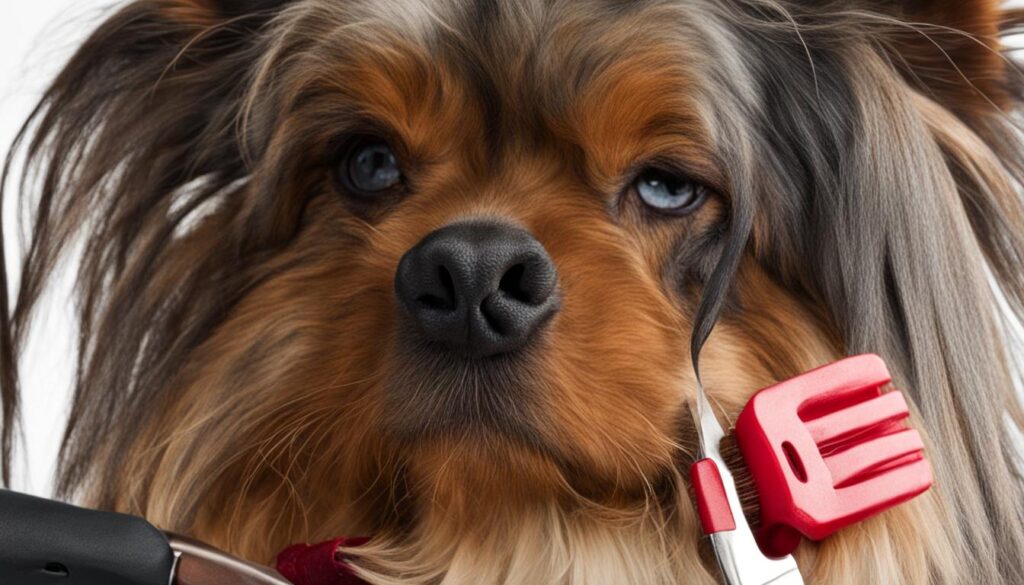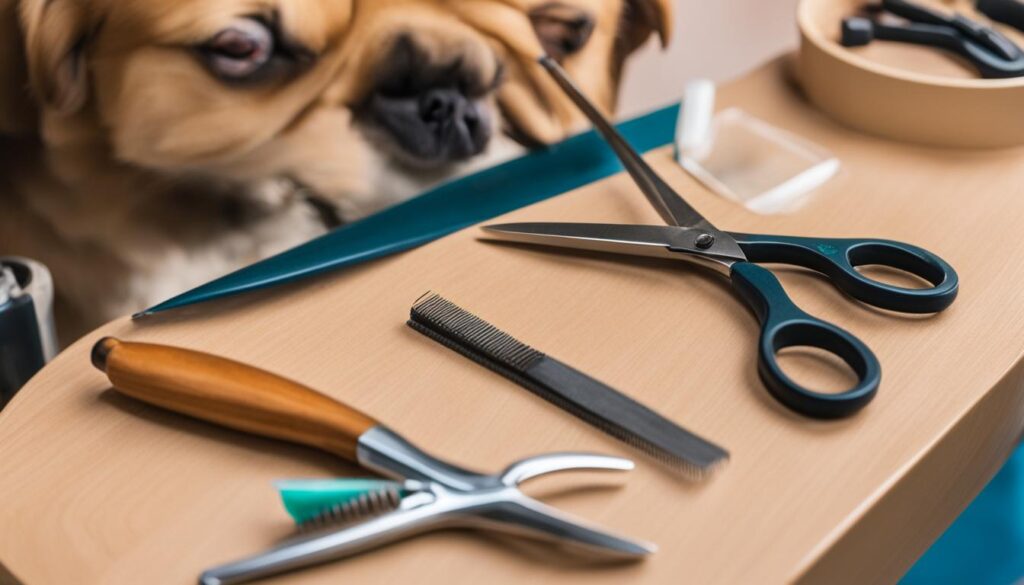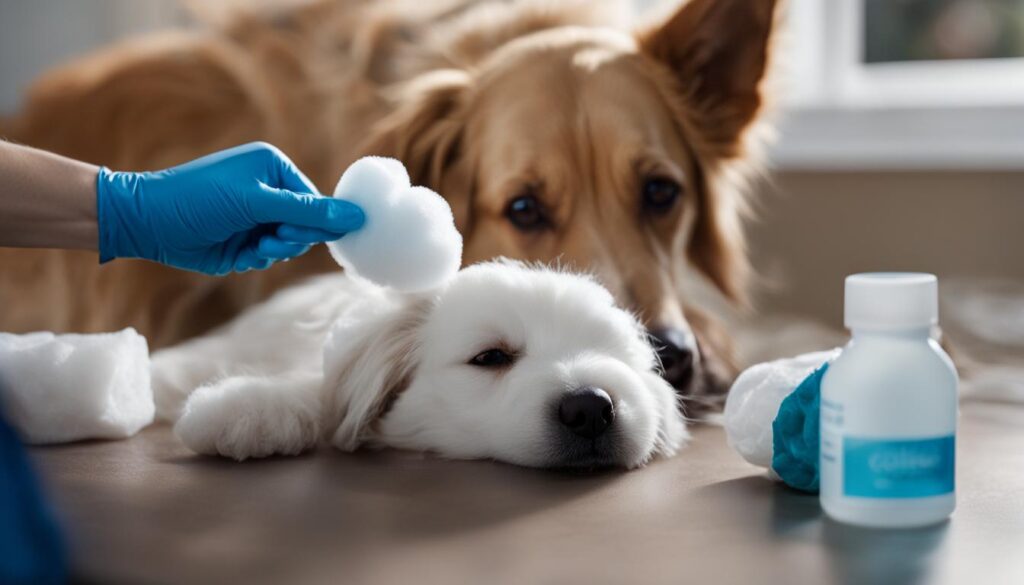Painless Dog Ear Hair Removal Guide
Removing ear hair from dogs is an important part of their overall care and grooming routine. Unmanaged ear hair can lead to various health issues, including bacterial and yeast infections, foul odors, hearing problems, and socialization issues. To ensure the well-being of your furry friend, it is essential to find effective and painless methods of removing ear hair.
There are several techniques you can use to remove your dog’s ear hair painlessly. Manual removal involves plucking the hair with your fingers or tweezers. This method allows for more control and precision, ensuring minimal discomfort for your dog. Electric clippers can also be used to quickly and easily trim the ear hair. Scissors can be an option, but it is crucial to seek professional advice if you are unsure about proper usage.
Prevention is key when it comes to managing ear hair in dogs. Regular cleaning and trimming can help prevent excessive hair growth and the associated problems. By incorporating these practices into your dog’s grooming routine, you can keep their ears clean, healthy, and free from discomfort.
Key Takeaways:
- Removing ear hair from dogs is essential for their health and well-being.
- Unmanaged ear hair can lead to infections, foul odors, hearing problems, and socialization issues.
- Painless methods of removing ear hair include manual removal, electric clippers, and seeking professional help.
- Prevention through regular cleaning and trimming can help maintain healthy ears for your dog.
- Proper care of your dog’s ears contributes to their overall happiness and quality of life.
Why Removing Ear Hair From Dogs is Important?
Removing ear hair from dogs is important for several reasons. Firstly, unmanaged ear hair can harbor bacteria and yeast, leading to painful and difficult-to-treat infections. Infections can also cause foul odors due to increased wax production. Secondly, long ear hair can impact a dog’s hearing by trapping sound waves and preventing them from reaching the eardrum. This can be especially problematic for older dogs. Additionally, unmanaged ear hair can lead to ear hematomas, which are painful and can permanently damage the shape of the ear. Lastly, long ear hair can negatively affect a dog’s social life, as other dogs may view it as a sign of poor hygiene.
Ensuring proper removal of ear hair can help address these issues and promote a healthy and happy life for dogs. Your furry friend deserves the best care, and by removing ear hair on a regular basis, you can prevent infections, improve their hearing, and maintain their overall well-being. Trusting in the importance of dog ear care will result in a happier and healthier companion.

Types of Dog Ear Hair Removal Methods
There are several methods for removing ear hair from dogs. Manual removal, electric clippers, scissors, and seeking professional help are some of the options available to dog owners. Each method has its advantages and considerations, allowing you to choose the most suitable approach for your furry friend’s comfort and well-being.
Manual Removal
Manual removal involves using fingers or tweezers to pluck the hair out one by one. This method is relatively painless and allows for more control over which hairs are removed. You can gently grasp the individual hairs, close to the base, and pluck them out in the direction they grow. Be careful not to tug forcefully or cause any discomfort to your dog during this process.
Electric Clippers
Electric clippers offer a quick and efficient way to remove ear hair from dogs. Before using clippers, make sure you are using the right blade size and keeping it sanitary. Trim the hair carefully by moving the clippers in the direction of hair growth to avoid any accidental cuts or irritation. Be mindful of your dog’s comfort and always approach the process with caution.
Scissors
Scissors can be used for precision trimming of ear hair, especially for dogs with long or sensitive coats. If you choose to use scissors, make sure they have rounded tips to reduce the risk of accidental injury. However, it is recommended to seek professional help if you are unsure about proper usage, as incorrect trimming can harm your dog’s ears and cause unnecessary distress.
Professional Help
If you feel uncomfortable removing the ear hair yourself or are unsure about the best approach, you can always seek professional help. Groomers or veterinarians have the expertise and experience to safely and efficiently remove ear hair without causing any harm or discomfort to your dog. They have the necessary tools and knowledge to perform the task effectively, giving you peace of mind.
Prevention is essential in managing ear hair growth in dogs. Regular cleaning and trimming of the ear hair can help prevent excessive growth. By maintaining a clean and healthy environment in your dog’s ears, you can minimize the risk of infections and discomfort.

How to Clean Dogs Ears Safely
Cleaning your dog’s ears is an essential aspect of grooming that promotes their overall health and well-being. Regular ear cleaning helps prevent infections and keeps the ears clean and comfortable. In this section, we’ll provide you with some safe and effective tips on how to clean your dog’s ears.
Why is cleaning your dog’s ears important?
Regular ear cleaning is crucial for maintaining your dog’s ear health. It helps prevent the buildup of wax, dirt, and debris, which can lead to bacterial or yeast infections. By cleaning your dog’s ears, you can minimize the risk of discomfort, irritation, and potential hearing loss.
Signs of Ear Infection in Dogs:
- Foul odor
- Scratching or rubbing of the ear
- Discharge
- Pain or tenderness
- Redness or swelling
- Frequent head shaking
If you notice any of these signs, it’s essential to seek veterinary attention to diagnose and treat the ear infection promptly.
Tips for safe dog ear cleaning:
- Choose the right cleaning solution: Use a gentle, veterinarian-approved ear cleaning solution or fragrance-free baby wipes to clean your dog’s ears. Avoid using alcohol-based solutions or harsh chemicals that can cause irritation.
- Get your supplies ready: Gather all the necessary supplies before starting the cleaning process. You may need cotton balls or pads, a towel, and your chosen ear cleaning solution.
- Handle with care: Approach your dog calmly and gently. Make sure they are comfortable and relaxed before beginning the ear cleaning process.
- Start on the outer ear: Begin by gently wiping the outer part of the ear with a dampened cotton ball or wipe. This helps remove any visible dirt or wax. Avoid inserting anything into the ear canal.
- Use soft strokes: With a clean cotton ball or pad, moistened with a small amount of ear cleaning solution, gently wipe the inner part of the ear. Use soft strokes, being cautious not to go too deep into the ear canal. You can also use your fingers to massage the base of the ear for additional comfort.
- Keep it brief: Limit each ear cleaning session to a few minutes to prevent discomfort or stress for your dog. If your dog becomes anxious or resistant, take a break and try again later.
- Reward your dog: After each successful ear cleaning session, reward your dog with praise, treats, or a favorite activity. This positive reinforcement helps create a positive association with ear cleaning and makes it easier for future sessions.
Note: If you encounter any abnormalities during the ear cleaning process, such as excessive redness, swelling, discharge, or persistent discomfort, it’s important to consult with your veterinarian for further evaluation.

Conclusion
Proper care and removal of ear hair is crucial for your dog’s health and well-being. Unmanaged ear hair can lead to infections, hearing problems, socialization issues, and discomfort. By following painless dog ear hair removal methods such as manual removal, electric clippers, scissors, or seeking professional help, you can ensure the cleanliness and health of your pet’s ears.
Regular cleaning and trimming are also essential to prevent excessive hair growth, which can contribute to these issues. By maintaining healthy ears through proper care and regular maintenance, you can greatly enhance your dog’s overall happiness and quality of life.
Remember, keeping your dog’s ears clean and free from excessive hair is not only beneficial for their physical health but also for their emotional well-being. By prioritizing dog ear care, you are showing your love and commitment to their happiness and comfort. So, make sure to incorporate painless dog ear hair removal and regular grooming into your pet’s routine to maintain healthy and happy ears.
FAQ
Why is removing ear hair from dogs important?
Removing ear hair from dogs is important because unmanaged ear hair can lead to bacterial and yeast infections, foul odors, hearing problems, and socialization issues.
What are the different methods for removing dog ear hair?
There are several methods for removing dog ear hair, including manual removal, electric clippers, scissors, and seeking professional help.
How can I clean my dog’s ears safely?
To clean your dog’s ears safely, use fragrance-free baby wipes or specialized ear cleaning solutions. Gently wipe away excess wax or dirt from the inner ear using soft strokes. Avoid cleaning too deeply into the ear canal or using cotton buds.
Why is regular ear cleaning important?
Regular ear cleaning is important to prevent infections and keep the ears healthy. It helps maintain cleanliness and prevent excessive hair growth.
What are the signs of an ear infection in dogs?
Signs of an ear infection in dogs include a foul odor, scratching or rubbing of the ear, discharge, pain or tenderness, redness or swelling, and frequent head shaking. Veterinary attention should be sought if an ear infection is suspected.


